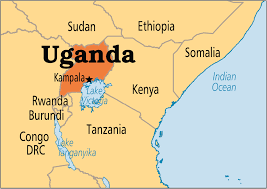When Winnie Nalubanga, 20, checked into a clinic with a fever, she expected relief. Instead, the injection she received made her situation worse when her skin developed blisters and peeled off.

Nalubanga, a senior six candidate at Iganga Parents Secondary School, had caught a fever and gone to Hope Medical clinic in Iganga for treatment. She expected to get some anti-malaria tablets, which would enable her prepare for her mock exams.
Instead, she has spent the last three weeks in hospital. Nalubanga’s skin darkened and she developed burn wounds from head to toe after two rounds of injections.
Interviewed from her hospital bed on August 28, Nalubanga said she got a persistent headache and fever, which the school nurse failed to treat.
She was later sent home and her mother took her to Hope Medical clinic for better treatment.
“At the clinic, they tested her blood samples and diagnosed her with malaria and typhoid. Then Dr Wilberforce Bamudaziza, the proprietor of Hope Medical clinic, prescribed for her the relevant medication and ordered the nurses to give her treatment for three days, which included injections, drip and tablets,” narrated Joyce Namusoke, Nalubanga’s mother.
After the first injection, Nalubanga developed a skin rash immediately but the doctor and the nurses said it was a normal reaction.
“They continued to give her the same treatment for three days until we asked them to stop because my child was almost dying,” she said.
Namusoke said her daughter’s insides began to burn too. The eyes and throat got blisters, she said. Nalubanga also started bleeding, urinating and vomiting blood. According to her mother, Dr Bamudaziza continued treating her daughter for five days but the situation kept getting worse until at her insistence the girl was transferred to Jinja Main hospital.
“When Nalubanga was assessed in Jinja, the doctors attributed her burns to drug over-reaction… ,” Namusoke said.
Sr Ann Kenyange, the staff nurse at Jinja Main hospital, said they confirmed Nalubanga had reacted to the injected medication but the clinic delayed to refer her to hospital to stop the reaction immediately. She said Nalubanga came with part of the medicine she reacted to, which included ciprofexacin, procaine penicillin and benzyl penicillin.
“If you saw her the first time she was brought here, you couldn’t believe that she could sit or eat. She had turned black like charcoal, couldn’t see and all her body had swollen wounds. The moment we realised that it was a drug reaction, we changed the medication and she has improved now,” the nurse said.
Kenyange added that Uganda lacks machines that detect anti-bodies before a patient is given any drug to avoid adverse reactions.
“However, we depend on medical history of a patient like if he or she has every reacted to a drug and we don’t give it to her. But few doctors follow the patients’ history,” she said.
Interviewed for a comment, Dr Bamudaziza said he didn’t know exactly what happened to Nalubanga after treating her. “I’m busy in theatre with other patients, I have no comment,” he said, before hanging up.
Nalubanga said although she has improved, she still feels much pain in her belly.

